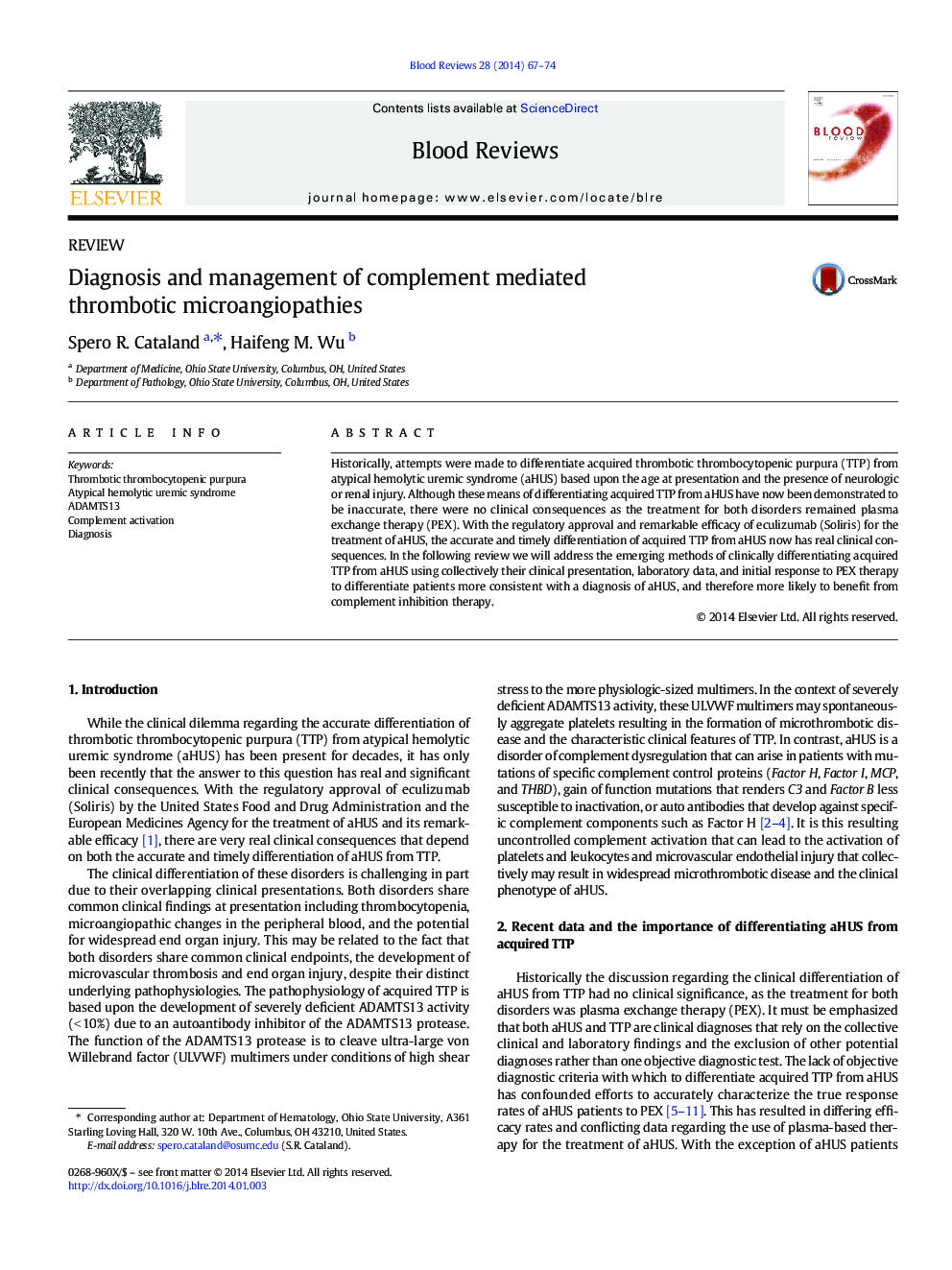| Article ID | Journal | Published Year | Pages | File Type |
|---|---|---|---|---|
| 2106154 | Blood Reviews | 2014 | 8 Pages |
Historically, attempts were made to differentiate acquired thrombotic thrombocytopenic purpura (TTP) from atypical hemolytic uremic syndrome (aHUS) based upon the age at presentation and the presence of neurologic or renal injury. Although these means of differentiating acquired TTP from aHUS have now been demonstrated to be inaccurate, there were no clinical consequences as the treatment for both disorders remained plasma exchange therapy (PEX). With the regulatory approval and remarkable efficacy of eculizumab (Soliris) for the treatment of aHUS, the accurate and timely differentiation of acquired TTP from aHUS now has real clinical consequences. In the following review we will address the emerging methods of clinically differentiating acquired TTP from aHUS using collectively their clinical presentation, laboratory data, and initial response to PEX therapy to differentiate patients more consistent with a diagnosis of aHUS, and therefore more likely to benefit from complement inhibition therapy.
